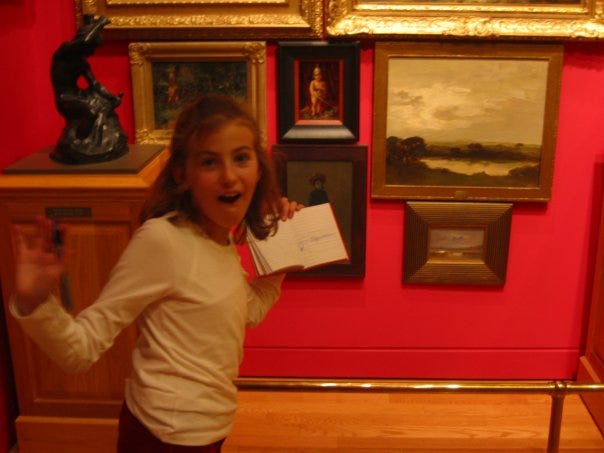Being entrenched in the art world, it can be hard to remember what it feels like outside of it. And then someone asks me something like: Am I allowed to go into an art gallery, or do I have to pay? Or tells me a story of being ignored when entering a gallery. Then, I remember.
The art world is full of hidden cues, secret rules, and an unspoken hierarchy. For that reason, words like “accessible” and “democratize” have become de rigueur as a way for art world players to signal that they’re different from the structure that they exist within. But what does it really mean to be accessible in the art world? Is it simply a word that exists like a band-aid?
What I’m trying to do here is demystify: Take all that I’ve learned about the art world and its rules, and talk about them openly.
The art world is invested in stillness: the quiet of an art gallery, the slow walk through a museum, sitting in front of a favourite piece of art. I’m interested in movement in the art world.
One of my favourite movie scenes is from Bande à part (Jean-Luc Godard, 1964), where Franz, Arthur, and Odile run through the Louvre, beating the previous record by a few seconds. This scene was re-enacted in The Dreamers (Bernardo Bertolucci, 2003)—another great French film. Running through the Louvre is very obviously breaking an unspoken rule of a gallery. It’s loud and disruptive, and negates the idea of how we should act in a gallery: pensively looking at priceless art.
That’s why I love it so much. Who says we can’t run in a museum? There’s certainly no sign that says No Running (it’s not a public pool!). It’s implied, along with other rules like: no speaking loudly, no flash photography, no big bags. If you break these unspoken rules, you’re bound to be shushed or reprimanded by a security guard.
The only way to learn about a rule is to break it. Perhaps real art world accessibility could be achieved by loosening some of these archaic rules that exist within the walls of a white cube that exist to protect art as a commodity. Why can’t we dance, sing, run, host a rave, or have a picnic within an art gallery?
It might just make the art world a bit more fun, opening it up to more people.
From July to October, I’ll be conducting research as part of my Curatorial Residency at NAMARA | projects. I’m interested in the above ideas of rule-breaking within the art institutions, as well as artists who use walking as a pillar in their art practices.
The residency will ask: Can a walking practice push against the rules and expectations of the contemporary art market? Who has access to certain spaces in the city? And how is that access reflected within the walls of the art world?
To launch the residency, anyone can book a time to walk with me around downtown Toronto and discuss their experience of the art world. Alternatives (including sitting outside, a phone call, etc) will be provided upon request.







Your note on the practice of walking made me think of the Toronto based choreographer Denise Fujiwara (You should ask her to go for a walk!). I am a painter but I used to take her movement/ Butoh based workshops which always begin with us just walking around a large studio in circles. We could vary our walk, fast, then slow, while she asked us to notice the sensations and imbalances in our bodies. People would limp, skip, run, fall.. it was a pretty amazing experience. The power of walking!
The “archaic” rules that you question have logic, at least if you respect other people and future generations. Flash photography harms artwork. Large bags proved to be a liability and facilitated easy theft.
You don’t run in a museum because you respect others’ museum experiences. You don’t speak loudly for the same reason. So, you don’t like it? I don’t like sporting events, they are loud. Should everyone just pipe down? Should we yack in libraries too?
You can’t see art while running. Aren’t there already enough things in the world that are suited for that? Why does the art world need to change to meet people who haven’t taken the time to investigate it? Champion education, not acting like a toddler. Go on a running path, to the gym.
And in galleries, they don’t have to be “nice” to you and make you “feel seen.” People who work there are paid poorly, but it is a tradeoff for not having to be perky and smile, “Welcome to Hooters!!”
Consider time and place. Consider other people who came before you and who will come after you.
Art needs to be “fun”? What? So go to the Disneyfied version of immersive Van Gogh or the like. Christian Boltansky really needs to cheer up. Can’t Pollack have used pretty colors? Why didn’t Rothko paint smiley faces? The museums are designed to protect centuries of culture. So, go to a nightclub, a playground, or an amusement park.